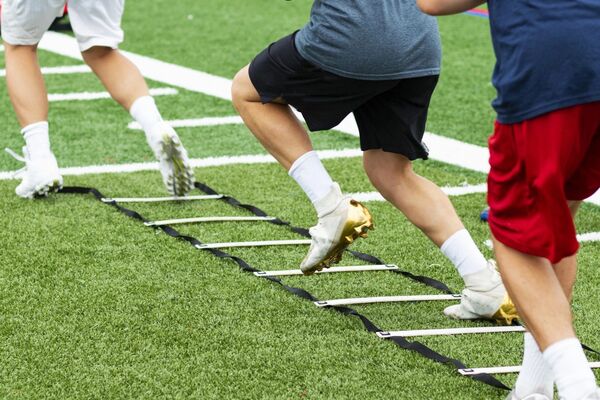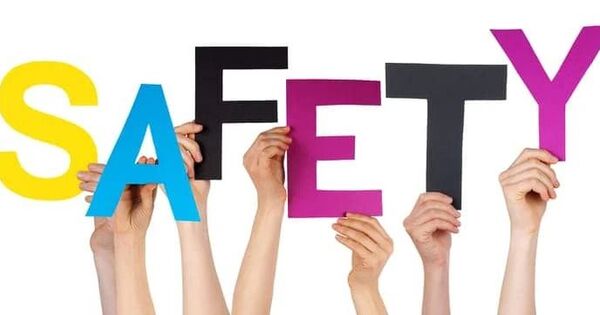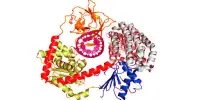Researchers began providing annual studies and bi-annual updates on the health and safety rules for secondary schools in each state and Washington, D.C. The evaluations are based on safety measures that states can implement, such as emergency action plans, the presence of automated external defibrillators on-site, teaching coaches to watch for signs of concussion, the treatment of exertional heat stroke, and so on.
Beginning in 2017, UConn’s Korey Stringer Institute (KSI), a division of the College of Agriculture, Health, and Natural Resources, began issuing yearly reports and bi-annual updates on the health and safety rules for secondary schools in each state and Washington, DC. The evaluations are based on safety measures that states can implement, such as emergency action plans, the presence of automated external defibrillators on-site, teaching coaches to watch for signs of concussion, the treatment of exertional heat stroke, and so on. According to KSI’s most recent findings, 38 states have implemented legislative or state high school athletic association improvements that promote student athlete safety since the process began three years ago.
The paper detailing nationwide updates and progress was published this week in the American Journal of Sports Medicine.
The report illustrates the progress made since 2017, and it also helps Team Up for Sports Safety (TUFFS) zero in on ways to help decision makers take steps toward further improvements to safeguard athlete safety.
We meet with key individuals – for instance, the State Athletic Association, sports medicine, advisory committees, superintendents, principals, legislators, anybody that could play a role in either enforcing or implementing the policies for high school sport safety.
Rebecca Stearns
Rebecca Stearns, Assistant Professor, Department of Kinesiology, Chief Operating Officer of the Korey Stringer Institute, and Director of TUFFS, explains that KSI and the TUFFS initiative are on a mission to travel from state to state to meet with policymakers and ensure that life-saving policies are implemented nationwide.
“We decided to do a state-based approach and make it a really targeted, individualized approach for the states,” she explains.
Policies take time to implement, but TUFFS works to make the process easier by meeting with important officials from each state to identify areas for rapid and significant change. Meetings with officials from each state are scheduled to present policies and measures suited to that state’s needs and opportunities for improvement.
“We meet with key individuals – for instance, the State Athletic Association, sports medicine, advisory committees, superintendents, principals, legislators, anybody that could play a role in either enforcing or implementing the policies for high school sport safety,” says Stearns. “Then we focus on four conditions we call the four H’s; head, heart, heat, and hemoglobin, which translate to cardiac arrest, head injuries, heat stroke, and sickle cell trait. Those four conditions make up 90% of the deaths that we see, so that’s why we target those when we go to the state meetings.”

By the end of the conference, Stearns adds, “We have a policy document that decision makers can take forward and vote on or put through a legislative process.” As described in the paper, this method has been successful, with every state that has met with TUFFS reporting considerable improvements in the implementation of life-saving safety measures.
“In the last three years, the top five states [with improved safety] were all states that TUFFS visited,” Stearns says. “We’re proud of the fact that those are the states making the biggest score increase in the last three years. Also, none of the states ranked in the bottom five have had a TUFFS meeting yet. In terms of the impact, the mean score increases by 10% after we’ve worked with states.”
Stearns illustrates that while finance issues are frequently the most difficult obstacles to enacting policy changes, they are not the only ones.
“The other major obstacle is determining who is ultimately responsible for athlete health and safety. Is the state high school association liable for this? “Is it legislative or legal?”
Despite these hurdles, and the sometimes-slow process of policy change, the TUFFS team is heartened by the findings and the fact that momentum is rising, but Stearns adds that more effort must be done to raise awareness. With millions of students participating in sports every year, many schools across the country are still unprepared or underprepared to respond appropriately in the event of potentially fatal consequences.
















